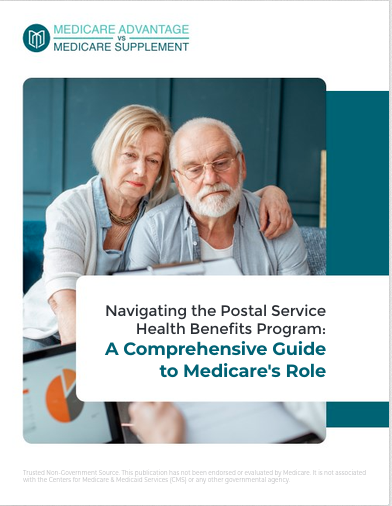Key Takeaways:
-
Medicare is introducing significant changes in 2025, including a $2,000 annual cap on out-of-pocket drug costs and a new payment plan for prescriptions.
-
Beneficiaries should review plan updates and take advantage of open enrollment to ensure their coverage meets their healthcare needs.
Staying Ahead: Understanding Medicare in 2025
If you’re a Medicare beneficiary, 2025 is bringing changes that could impact your coverage, costs, and overall healthcare experience. From new caps on drug expenses to adjustments in Medicare Advantage plans, it’s important to stay informed so you can make the best choices for your health.
Understanding the nuances of these updates might feel overwhelming, but taking proactive steps ensures you stay ahead. By regularly reviewing your plan details and keeping track of upcoming changes, you’ll have the tools needed to make informed decisions.
Breaking Down the Big Changes
A New Era for Prescription Costs
The most talked-about change is the $2,000 annual out-of-pocket cap for Medicare Part D. If you’ve faced high drug expenses in the past, this update can make a significant difference in your budget. Once you’ve spent $2,000 on prescription drugs, Medicare will cover the rest for the year. This development eliminates uncertainty and provides financial predictability for beneficiaries who rely on costly medications.
Another feature debuting in 2025 is the Medicare Prescription Payment Plan. This option allows you to spread your drug costs across the year in monthly installments. Instead of large upfront expenses, you can ease the financial burden with more manageable payments. These changes together make Medicare Part D more accessible and less financially daunting for beneficiaries.
Premiums and Deductibles Adjustments
While Medicare premiums and deductibles often see yearly changes, 2025 is no exception. Here’s what to expect:
-
Medicare Part A: For those who pay a premium, the cost will increase, with the inpatient hospital deductible rising to $1,676 per benefit period. Beneficiaries with longer hospital stays should also prepare for higher daily coinsurance costs.
-
Medicare Part B: The standard monthly premium will rise to $185, and the annual deductible will increase to $257. These adjustments are significant and may affect your monthly budget if you rely heavily on Part B services like doctor visits and outpatient care.
-
Medicare Part D: The maximum deductible for prescription drugs will be $590, but the new $2,000 out-of-pocket cap offsets this increase for many beneficiaries. These deductible increases emphasize the importance of planning your healthcare spending early in the year.
How Medicare Advantage Plans Are Changing
Medicare Advantage (Part C) plans often include additional benefits like vision, hearing, and dental coverage. In 2025, these plans are adapting to offer more tailored options, including:
-
Enhanced Special Needs Plans (SNPs): Designed for individuals with specific health conditions, these plans are expected to expand. By targeting unique medical needs, SNPs provide focused care that can result in better outcomes.
-
Stability in Costs: While some premiums may shift slightly, the overall trend points to stable or even reduced costs for many enrollees. This stability can be reassuring for those managing fixed incomes.
It’s essential to review your Annual Notice of Change (ANOC) to understand any updates to your plan’s premiums, deductibles, and copayments. This annual review ensures you’re not caught off guard by unexpected changes in your coverage or costs.
Navigating Open Enrollment in 2025
The Medicare Open Enrollment period runs from October 15 to December 7. During this time, you can:
-
Switch from Original Medicare to Medicare Advantage (or vice versa).
-
Enroll in or change Medicare Part D plans.
-
Adjust your existing Medicare Advantage plan if your needs have changed.
Taking advantage of this enrollment window is critical for ensuring your coverage aligns with your medical and financial requirements. Missing the deadline could mean sticking with a plan that no longer serves you well for another year.
Key Steps for a Smooth Enrollment
-
Review Your Current Plan: Compare your current coverage to the new options available. Pay close attention to premiums, deductibles, and out-of-pocket limits. Ignoring these details could result in unexpected costs later.
-
Check Drug Formularies: Ensure your medications are covered and compare costs between plans. Formulary changes can affect both the availability and affordability of your prescriptions.
-
Use Medicare’s Plan Finder Tool: This tool helps you explore your options and find plans tailored to your needs. By leveraging this resource, you save time and make more confident decisions.
Coordinating Medicare with Other Coverage
If you have additional health coverage, such as employer-sponsored insurance or Medicaid, it’s important to understand how Medicare interacts with these plans. For instance:
-
Medicare and FEHB: Federal employees and retirees often coordinate their Federal Employees Health Benefits (FEHB) plans with Medicare to maximize coverage and reduce out-of-pocket expenses. This combination ensures broader access to healthcare services.
-
Medicare and Medicaid: If you qualify for both, you’re considered a dual-eligible beneficiary, which may cover costs like premiums and copayments. Being dual-eligible opens the door to enhanced benefits and significant cost savings.
Staying Informed About Supplemental Benefits
Medicare Advantage plans continue to offer supplemental benefits, which are not covered by Original Medicare. These include:
-
Routine Vision and Dental Care: Many plans provide annual exams, glasses, or dental cleanings. These services help prevent long-term health issues tied to vision or oral health.
-
Hearing Aids: Coverage often includes exams and discounts on devices, which are essential for maintaining communication and quality of life.
-
Wellness Programs: Options like fitness memberships or mental health services may be available. These benefits encourage a proactive approach to health and wellness.
Exploring these additional benefits can add value to your coverage, making Medicare Advantage an appealing choice for many beneficiaries.
Preparing for the Medicare Prescription Payment Plan
The new payment plan for Part D in 2025 can help you manage prescription costs more effectively. Here’s how to get ready:
-
Understand the Enrollment Process: The plan is optional, so you’ll need to sign up to take advantage of it. Check your plan’s specific requirements to ensure you’re eligible.
-
Set a Budget: Use the plan to spread costs over the year, ensuring your monthly expenses fit within your financial plan. This approach allows for better cash flow management and fewer financial surprises.
-
Keep Track of Spending: Monitor your expenses to ensure you’re staying within the $2,000 cap. Staying organized can prevent unnecessary out-of-pocket costs.
What’s Next for Medicare in 2025?
As Medicare evolves, staying proactive is the key to making the most of your coverage. Here are some trends to watch:
-
Digital Tools and Telehealth: Continued emphasis on technology is expected, making it easier to access care and manage your benefits. Expect to see enhancements in telehealth services, offering convenience for those who prefer virtual consultations.
-
Preventive Care Focus: Medicare will likely expand its focus on preventive services to help beneficiaries maintain their health and avoid costly treatments. Early detection and intervention can lead to better health outcomes and lower expenses.
-
Legislative Updates: Future changes may arise from ongoing healthcare reforms, so keep an eye on announcements from Medicare. Staying informed ensures you’re prepared for any shifts in benefits or requirements.
Maximizing Your Medicare Benefits
Here are a few tips to ensure you’re getting the most out of your Medicare plan:
-
Annual Wellness Visits: Use your Medicare coverage for preventive visits to catch potential health issues early. These visits provide an opportunity to address concerns before they escalate.
-
Preventive Screenings: Take advantage of screenings for conditions like diabetes, cancer, and cardiovascular disease. Regular screenings can help you maintain good health and avoid more expensive treatments later.
-
Ask Questions: Don’t hesitate to contact Medicare or your plan provider for clarification on benefits and coverage. Having a clear understanding of your plan ensures you’re using it to its full potential.
Take Control of Your Healthcare in 2025
Medicare’s updates for 2025 offer opportunities to better manage your healthcare costs and access. By staying informed and proactive, you can make choices that align with your needs and budget. Whether you’re exploring new plans, reviewing existing coverage, or preparing for changes, the effort you invest now will pay off throughout the year.
Embrace the upcoming changes with confidence and take charge of your healthcare journey.










